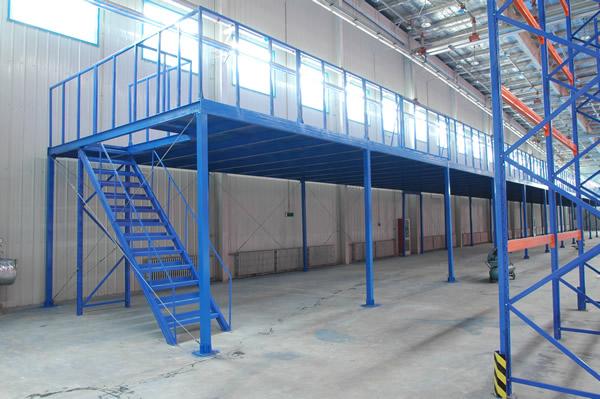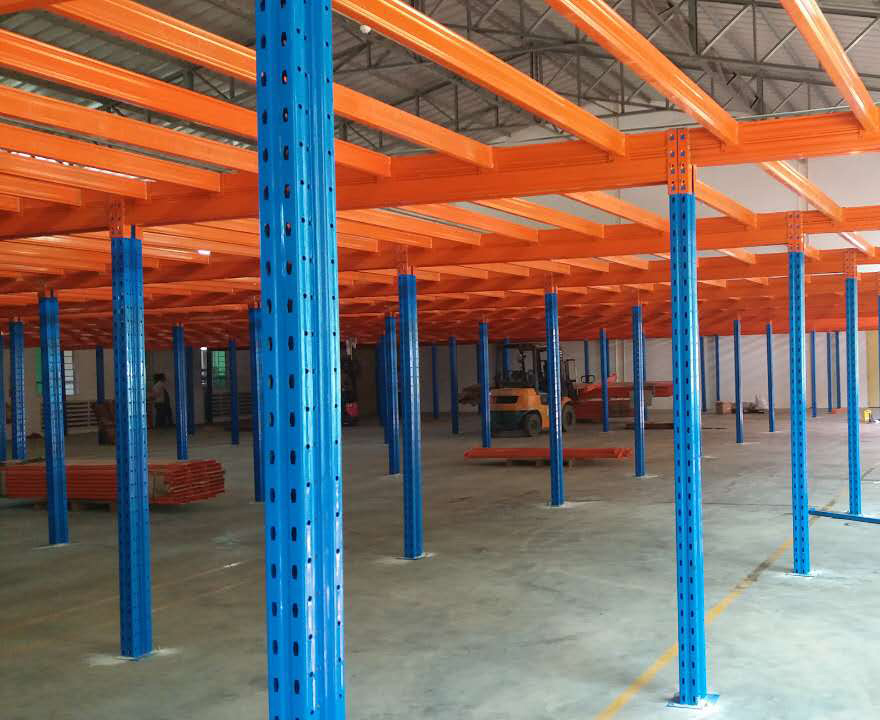If you're managing a warehouse, distribution center, or any sizable storage space, you've undoubtedly faced the critical question of how to store more, faster, and safer. At the heart of this operational puzzle are warehouse storage racking systems. But navigating the world of racking can be overwhelming. The options are vast, and the financial commitment is significant. A primary concern for any business leader is, understandably, cost.
This article moves beyond a simple product list to provide a practical, in-depth look at the factors driving the price of these essential systems. We'll break down the costs associated with different types of warehouse storage racking systems, helping you make an informed investment that aligns with your budget and operational needs.

Before we talk numbers, it's crucial to understand the main players. The type of system you choose is the single biggest factor influencing the final price.
1. Selective Pallet Racking: The Flexible Workhorse
This is the most common type of warehouse racking system. It offers direct access to every pallet, making it ideal for warehouses with a high SKU count where any pallet might need to be picked at any time.
Typical Use Case: Ideal for a wide range of industries, from food and beverage to retail, where inventory turnover varies.
2. Drive-In/Drive-Thru Racking: Maximizing Density
For operations storing large quantities of the same product, drive-in racking is a high-density champion. Instead of aisles between each row, forklifts drive directly into the rack structure to place and retrieve pallets.
Typical Use Case: Perfect for cold storage or storing beverages, where space is at a premium and product is on a First-In, Last-Out (FILO) or First-In, First-Out (FIFO) basis.
3. Push-Back Racking: A Dynamic Alternative
Push-back racking systems offer high density with better selectivity than drive-in options. Pallets are stored on nested carts on slightly inclined rails. When a pallet is placed, it pushes the previous pallets back. Retrieving a pallet brings the next one forward.
Typical Use Case: Excellent for batch picking and storing multiple SKUs that still require good density.
4. Pallet Flow Racking: FIFO Automation
This system uses gravity to its advantage. Pallets are loaded from the rear on a slightly declined track with skate wheels. They flow gently to the front pick face, ensuring perfect FIFO inventory rotation.
Typical Use Case: Indispensable for industries with strict expiration dates, such as pharmaceuticals or perishable foods.
5. Mezzanine Systems: Creating New Space
When floor space runs out, look up. Mezzanines are elevated platforms installed within your warehouse, effectively creating a second or third floor for storage, offices, or production areas.
Typical Use Case: Any facility with high ceilings and a need to drastically increase storage capacity or operational space without expanding the building's footprint.
Asking "how much does a racking system cost?" is like asking "how much does a house cost?" The answer depends on a multitude of factors. Here’s what you need to consider.
1. System Type and Complexity
The core technology dictates the base price. A simple selective pallet rack will be the most cost-effective per pallet position. More complex systems like push-back, pallet flow, or mobile racking (where entire rows of racks move on tracks) carry a significantly higher price tag due to their specialized components and mechanics.
2. Material and Load Capacity
The strength and thickness of the steel determine how much weight your warehouse storage racking systems can hold. Heavier-duty systems designed for immense loads will require more robust—and more expensive—materials. Be prepared to provide detailed information about your pallet weights and dimensions to get an accurate quote.
3. Size and Scale of the Installation
The total number of pallet positions and the height of the system are direct cost drivers. A taller system requires stronger upright frames and deeper base plates, increasing material costs. Furthermore, a larger project may benefit from economies of scale, potentially lowering the cost per position.
4. Site Preparation and Installation
This is a often-overlooked cost. Is your floor perfectly level? Does your warehouse require significant reinforcement? The complexity of the installation labor is a major factor. Professional installation is non-negotiable for safety and integrity, and its cost can vary based on the project's duration and the crew's expertise.
5. Additional Components and Accessories
The basic frame and beams are just the start. You'll also need to budget for:
Wire Mesh Decking: Provides a safe surface for non-palletized goods and is often required by safety regulations.
Row Spacers and Pallet Supports: Essential for the stability of certain configurations.
Column Guards and End-of-Aisle Protectors: Crucial investments to protect your racking from forklift impacts.

Specialty Lighting: Needed for aisles in very high-density systems.
Selecting the right warehouse racking system isn't just about the cheapest upfront cost; it's about value and Return on Investment (ROI).
Analyze Your Inventory Profile: Do you have high turnover with many SKUs (favors selective racking) or deep storage of fewer SKUs (favors drive-in or push-back)? Matching the system to your product flow prevents costly mismatches.
Calculate Cost Per Pallet Position: To compare apples to apples, divide the total system cost by the number of pallet positions it creates. A more expensive system might offer a lower cost per position if it utilizes your cube more effectively.
Consider Total Cost of Ownership (TCO): Factor in long-term costs. A cheaper system with poor durability will cost more in repairs and replacements. A higher-density system might save you significant money on future warehouse expansion or rental costs.
Plan for the Future: Choose a system that can be reconfigured or expanded as your business grows. The flexibility of selective racking often provides excellent long-term value.
Investing in the right warehouse storage racking systems is a strategic decision that impacts your daily efficiency, safety, and bottom line. By understanding the types, costs, and selection criteria, you can confidently approach suppliers and design a storage solution that powers your business growth for years to come.
Q1: What is the most cost-effective type of warehouse storage racking system?
A1: For most applications, selective pallet racking is the most cost-effective option per pallet position. It offers a great balance of affordability, flexibility, and accessibility, making it suitable for a wide range of inventory types and turnover rates. Its simple design and common components also keep initial and long-term costs manageable.
Q2: How do I know if my warehouse floor can support a heavy-duty racking system?
A2: This is a critical safety question. A professional racking supplier or a structural engineer should always conduct a site survey. They will assess the concrete slab's thickness, compressive strength, and overall condition to determine if it can support the loaded weight of your proposed warehouse storage racking systems. Reinforcing the floor can be a significant additional cost.
Q3: What is the typical lead time for receiving and installing a new racking system?
A3: Lead times can vary widely, from a few weeks for standard selective racking to several months for highly customized or automated systems. Factors influencing lead time include the system's complexity, material availability (especially steel market conditions), manufacturer workload, and the scale of the installation. Always build buffer time into your project plan.
Q4: Are used warehouse storage racking systems a good idea to save money?
A4: Used racking can offer initial savings, but it comes with risks. It is crucial to verify that the components meet current safety standards, have no hidden damage (like hairline cracks or bent connectors), and are compatible with your specific layout and load needs. Missing or non-standard parts can create significant challenges. For critical load-bearing applications, new systems with engineering certification are generally recommended.
Q5: How often should I have my racking system professionally inspected?
A5: It is strongly recommended that a formal, professional inspection be conducted at least annually. However, routine visual inspections should be performed weekly or monthly by trained in-house staff to check for any visible damage, such as dents, bends, or loose components, especially after any impact from material handling equipment. Prompt repair of any damage is essential for maintaining the structural integrity of your warehouse racking system.
 Wechat
Wechat
 Whatsapp
Whatsapp